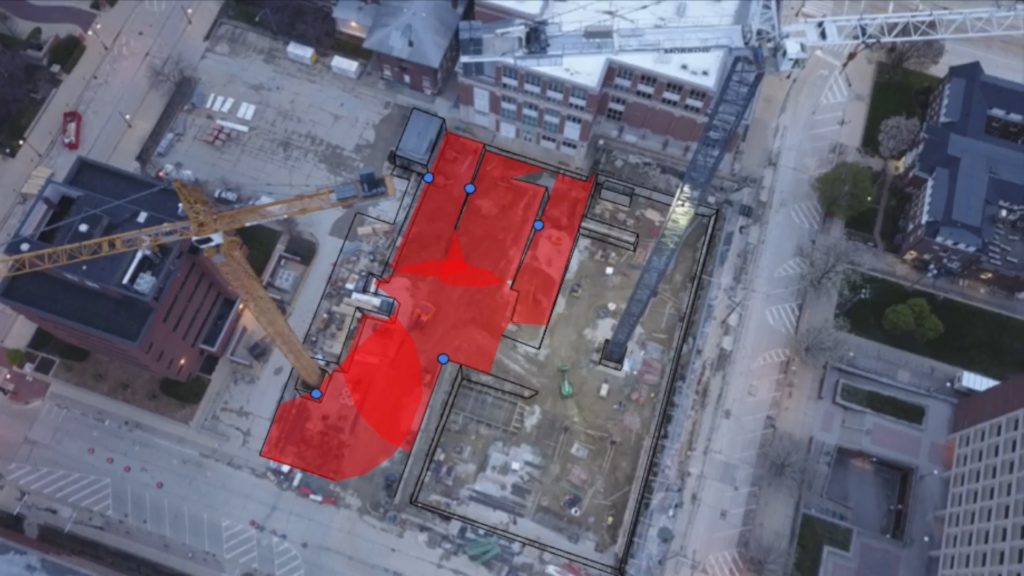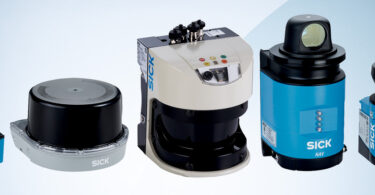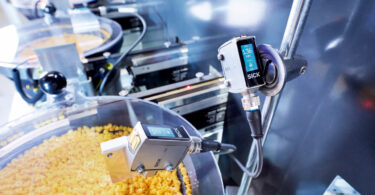Second place team of SICK’s TiM$10K Challenge creates a product to secure construction sites from theft and trespassing
Engineers are changing the world with LiDAR technology. In the case of our second-place team from the University of Illinois Urbana-Champaign, the main avenue of change is built in the construction industry. They entered SICK, Inc.’s annual TiM$10K Challenge with high hopes, and it has certainly paid off!
The team consisted of James Austgen, who led web portal and systems design for the project; Evan Lindquist, who lead hardware design; Chris Kull and Seth Wyma, who both led mobile app design; and Patrick Popelka, the business strategist. With the help of their academic advisor, Professor Geoffrey Herman of the Electrical & Computer Engineering department at University of Illinois Urbana – Champaign, the team was able to snag second place with their invention: The L-PUPP.
The L-PUPP Construction Protection System is a versatile, responsive, and easy-to-use system that, once activated, monitors whatever materials or equipment the user requires.
So, what is the TiM$10K Challenge? In this challenge, SICK reached out to universities across the nation that were looking to support innovation and student achievement in automation and technology. Participating teams were supplied with a SICK 270° LiDAR, a TiM, and accessories. They were challenged to solve a problem, create a solution, and bring a new application that utilizes the SICK scanner in any industry.
Developing L-PUPP
The idea for the L-PUPP all began in Austegen’s college dorm room.
“I noticed that the thermostat in my dorm room often changed to a higher temperature while I was away,” he explained. Annoyed by this, Austegen wanted to make a security device that could monitor his dorm room to see who kept changing the temperature.
On average, $300 million to $1 billion worth of material and equipment is stolen from construction sites each year. This stems from the three biggest problems with current construction security methods: size, inability to be moved, and data transmission.
In order to gain better security coverage on construction sites, the team decided that there were numerous benefits to integrating LiDAR within a security robot that can move around the site easily.
“The range and angular coverage of a LiDAR sensor seemed good for monitoring multiple machines or supplies at once, so we decided to make a portable construction site security system, called the L-PUPP,” Lindquist said.
The L-PUPP security system is versatile, responsive, and easy to use. Designed with scalability in mind, the user can move the device around as the site evolves and equipment is moved. This freedom of movement is much more useful than a stationary security camera. Multiple L-PUPP units can be integrated into one network, thus allowing for a greater range of security.
Weighing just under half a kilogram, the L-PUPP is built for convenience. Construction firms will be able to easily power it with a power adapter or drill battery. From there, all L-PUPP needs is an internet connection.
Learn more about L-PUPP in this video:
How L-PUPP Works
A single L-PUPP device contains a SICK TiM 781 LiDAR sensor enclosed in a compact casing with a Raspberry Pi minicomputer, which reports data to a central server. A 5-megapixel HD camera attached to the front provides visual feedback about the environment. The sensor reads distance data from the surrounding area and lets the L-PUPP know if a machine was removed or if something new entered the area. The device can receive power from either electricity with an adapter or a drill battery.
A drill battery, which most construction sites will already have on-site, stores enough energy to power the L-PUPP for approximately ten hours, enough to last one night. Having two different methods of supplying power allows the device to best fit the user’s needs—whether that be increased portability using the drill battery or increased continuous uptime with mains electricity. Users have three options to connect their L-PUPP to the Internet: hardwired Ethernet, WiFI, or a cellular connection.
The flexibility in power and internet options grants the user the freedom to move the device around as the site develops and equipment moves, unlike conventional security camera systems, which are usually fixed to one location.
“Our cloud servers can handle the addition of as many L-PUPPs as needed so that the security can scale as a construction site develops,” Kull explained.
Users can also monitor their L-PUPP system with a dedicated mobile application,” Wyma said. “The main advantage of having a mobile app is that when a region violation occurs, the app will alert the user with a notification, minimizing the response time to violations. Decreasing the response time is often critical for recovering stolen assets. The app also allows users to monitor live LiDAR data, review a history of violations, or change device-specific settings on the go with a phone.”
Roadblocks in the Journey
Like all technological marvels, L-PUPP’s development came with its own set of problems.
L-PUPP came with several subsystems that needed to be developed by the team. By watching how the Robot Operating System integrated with the SICK sensor, the team was able to get valuable experience learning about the intricacies of systems in practical situations.
“It was a major success when we got our first reading from the device,” Wyma said. “After plotting the numbers on a graph, we could see the individual windows of the classroom we were testing the device in.”
COVID-19 was, surprisingly, a minor problem in the production of L-PUPP. Because the team had started early, they were able to finish their project just before their university closed due to the virus.
“Starting early was important because it was always the case that things took longer than we first anticipated,” Austegen explained. “Luckily, we finished everything before the lockdown order.”
What the Future Holds
Popelka is excited to show that the marketability for the L-PUPP system extends far beyond construction.
“Although we designed this device for construction sites, the software that we developed could be implemented in a wide variety of consumer and commercial settings where widespread, precise, and secure surveillance and detection are a necessity,” Popelka said. “Thus, by implementing our system in a wide variety of settings, we aim to empower the everyday consumer with a tool that will provide them a better sense of security and safety.”
The team sees many areas where L-PUPP’s capabilities can be expanded.
“For instance, we could record videos rather than pictures when violations occur,” Lindquist said. “We could also further develop the alarm system so that it can be set to activate automatically for certain regions.”
The team has imagined several feasible additions which would allow for tiered pricing with L-PUPP, and they look forward to improving their creation in the future.
Register for the 2020-2021 TiM$10K Challenge

SICK is now accepting entries for the TiM$10K Challenge for the 2020-2021 school year! Student teams can register online by September 14, 2020. Student teams are encouraged to use their creativity and technical knowledge to incorporate the SICK LiDAR for any industry in any application. Advisors/professors are allowed to guide the student teams as required.
This contest was supported by PMMI Foundation’s U Skills Fund. PMMI Foundation works to grow awareness of careers in packaging and processing, providing assistance to schools and programs that develop students to excel in the industry.







